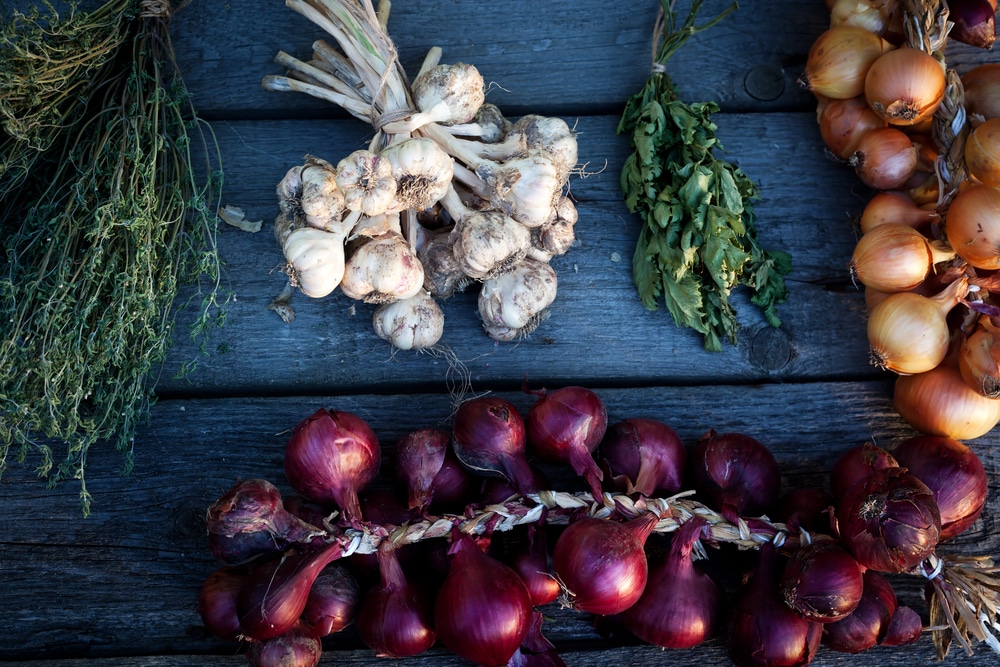Written by Brittany Poulson, MDA, RDN, CD, CDE
In the midst of winter and early spring it can be hard to remember to eat your fruits and veggies. Unlike the spring, summer and early fall months when gardens and markets are flourishing with fresh produce, winter paints quite the opposite picture. Gardens are thawing out, farmers markets are closed and cooking a recipe full of fresh fruits and vegetables can be a challenge. Add that to the 2015 findings that only about 1 in every 10 Americans eat enough fruits and vegetables on a daily basis. There is definitely room for improvement!
But must this time of year condemn us to limiting our fruit and vegetable intake to a relatively small list of seasonal produce for months on end? The answer is a big no! Options for fresh produce may be limited, but it doesn’t mean they are eliminated. From bright, sweet citrus to hearty root vegetables, winter produce offers a remarkable range of flavors. Buying fresh fruits and vegetables in season not only saves you money, but also gives you the best taste and nutrition. Go out of your comfort zone and purchase a seasonal fruit or vegetable you haven’t tried before. Who knows, you might find a new favorite!
Winter Produce
Fruits in season during the winter months include citrus fruits, such as oranges, lemons, clementines, mandarin oranges, kumquats, tangerines and grapefruit, cranberries, kiwifruit, pomegranate, dates, papaya, persimmon, passion fruit, pears, pummelo, and red currants.
Winter vegetables include Belgian endives, Brussels sprouts, winter squash varieties (buttercup, delicata, acorn, butternut, spaghetti and sweet dumpling), collard greens, kale, parsnips, leeks, sweet potatoes and turnips.
However, don’t think you can’t eat some of your favorite spring or summer fruits and vegetables during the winter. You can enjoy the taste of any fruit and vegetable year round. Whether it’s fresh, frozen, canned or dried, it all counts! Frozen fruits and vegetables in particular are a great way to get in your daily dose of fruits and vegetables. Frozen fruits and vegetables are harvested at their peak ripeness and often travel only a short distance to the facility they are flash frozen in. The freezing locks in the nutrients so they keep their same high nutritional profile from farm to your kitchen. In some cases, these can be more nutritious than fresh produce that have traveled long distances and sat on market shelves before you are able to purchase and consume them. The longer a fruit or vegetable sits out in the open, the more nutrients are broken down and lost. For best nutrition when it comes to frozen fruits and vegetables, choose options with no added ingredients – meaning the only ingredient in the package is the fruit or vegetable itself.
Frozen fruits make excellent additions to smoothies, baked goods, oatmeal, yogurt parfaits, fruit salads, and even as a replacement for ice cubes in your water while also adding a subtle flavor infusion. On the more savory end, toss your frozen vegetables into soups, casseroles, or gratins, bake them in a quiche, strata and even muffins, mix them into meatloaf, patties or dumplings, or puree and stir them into pasta sauce, hummus or pesto.
When choosing canned vegetables, it’s a good idea to keep an eye on sodium levels. Opt for low- or no-sodium added varieties. When preparing them at home, drain and rinse with water before cooking to remove some of the sodium. With canned fruits the less-than-healthy culprit is added sugar. Often times the fruit is packed in heavy syrup which adds a considerable amount of excess sugar. For healthier canned fruit, choose those packed in their own juices, 100% juice or water. When at home you can drain the juice, if desired.
Dried fruits can be a handy option to get some extra nutrition in, especially when you are on the go. One thing to keep in mind with dried fruits is portion sizes. Nutrients and calories are more concentrated in dried fruits. A mere 1/4 cup serving of dried fruit equates to 1/2 cup fresh fruit. When purchasing dried fruits, make sure the only ingredient on the package is the fruit itself, with no added sugars or sweeteners. Dried fruit is a great addition to trail mix, as a topping on your yogurt or cereal, tossed into a salad, mixed into sauces or dips or simply enjoyed as a snack in place of other sweets or desserts.
Whether you opt for winter’s best seasonal fresh produce or choose frozen, canned or dried, all types can help you get in your daily fruits and vegetables. Get creative in the kitchen; experiment by cooking in different ways with a variety of fruits and vegetables to find out which you like best. You just might be surprised at what you discover about your taste buds!
